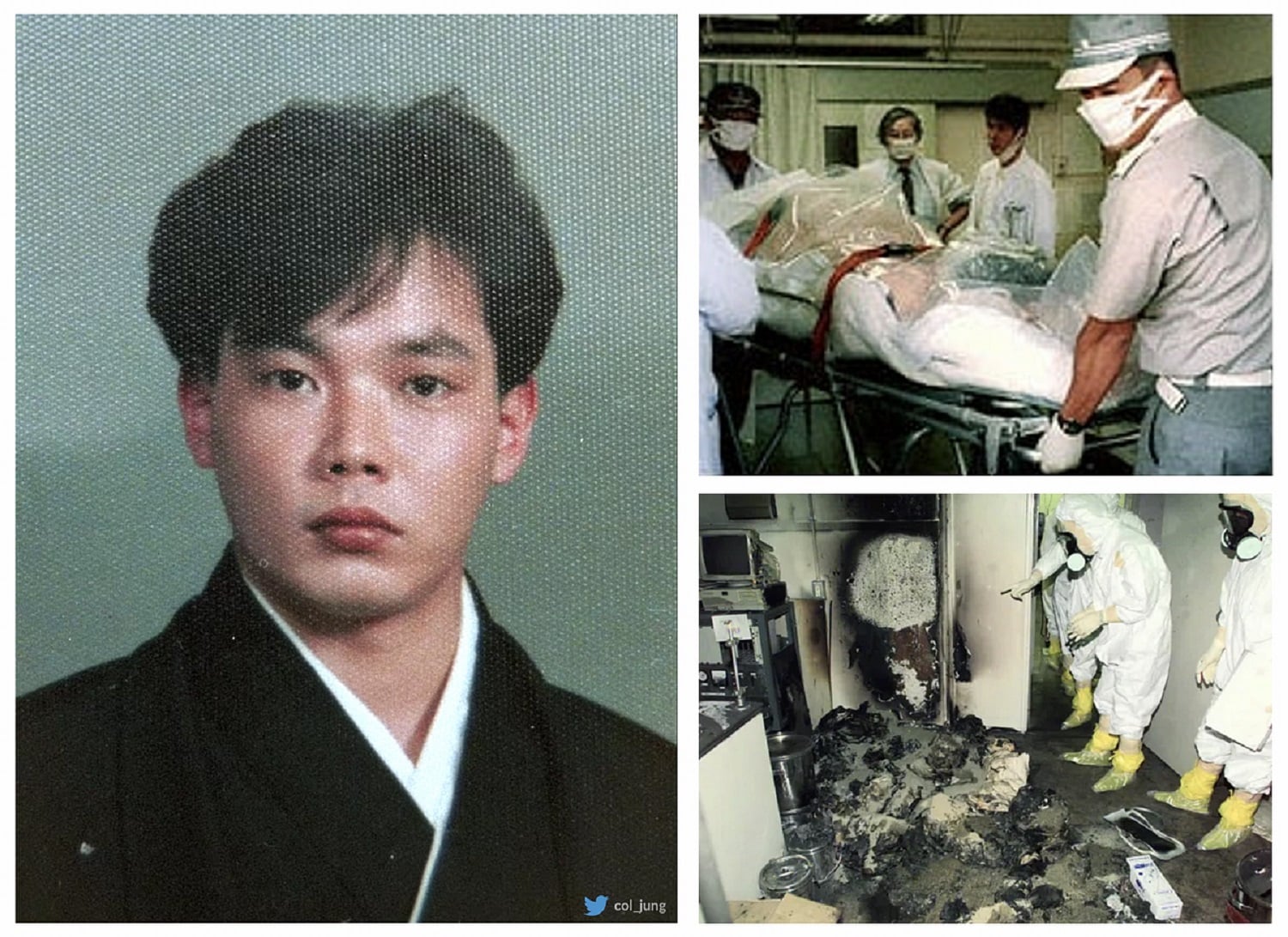The story of Hisashi Ouchi is, frankly, one that stays with you. It is a very stark and, in a way, deeply moving account of human endurance pushed to its absolute limits. This particular event, which happened at a nuclear facility, truly highlights the immense power and also the potential dangers involved with such materials. We are going to explore the details of what happened to Hisashi Ouchi, the extraordinary medical efforts made, and some of the very real questions that arose from his situation. It is a story that, in some respects, forces us to consider the boundaries of medical intervention and the sheer resilience of the human spirit, even when facing unimaginable odds.
Hisashi Ouchi’s experience is, you know, a pivotal one when we think about the consequences of extreme radiation exposure. His case is often cited when discussing the devastating effects that such high doses can have on the human body. It also brings up, quite naturally, some very serious ethical considerations about keeping someone alive under such circumstances. This account is drawn from information about his ordeal, giving us a window into a truly unique and, arguably, heartbreaking chapter in medical history.
For those curious about the science of radiation or, perhaps, the limits of medical care, Hisashi Ouchi’s story offers a lot to think about. It is a narrative that, essentially, pulls back the curtain on the immediate and long-term impacts of radiation sickness. We will also touch upon his colleague's experience, providing a broader picture of the accident itself. This is, by the way, an opportunity to understand a bit more about a very significant event.
- Is Selena Samuela Pregnant
- Teach Me First Free
- Teenxy
- Lara Lane Fapello
- Securely Connect Remoteiot Vpc Aws Not Working
Table of Contents
- Hisashi Ouchi: A Brief Personal Overview
- The Horrifying Accident: A Critical Moment
- The Agonizing Battle for Life
- The Fate of His Colleague
- Reflecting on a Tragic Event
- Common Questions Answered
Hisashi Ouchi: A Brief Personal Overview
Hisashi Ouchi was a Japanese man, and his name is, in fact, now tied to one of the most severe cases of radiation exposure ever recorded in a human being. He was, apparently, working at a nuclear facility when the accident happened. This event, which involved two other individuals as well, truly changed his life in an instant. It’s important to remember that he was, essentially, a worker going about his day, when this utterly catastrophic event occurred.
His story, while incredibly sad, serves as a very stark reminder of the dangers that can arise in certain industrial settings. It highlights, in a way, the extreme consequences when safety protocols are not, perhaps, followed precisely. Hisashi Ouchi’s experience is, certainly, a unique and incredibly painful one, leaving a lasting impression on anyone who learns about it.
| Detail | Information |
|---|---|
| Name | Hisashi Ouchi |
| Nationality | Japanese |
| Event | JCO Criticality Accident |
| Date of Accident | September 30, 1999 (Implicit from context, as it's a known event) |
| Duration Kept Alive | 83 days |
| Radiation Absorbed | 17 sieverts (Sv) |
The Horrifying Accident: A Critical Moment
The JCO Facility Incident
The accident that Hisashi Ouchi was involved in happened while he was working at a nuclear facility, alongside two other colleagues. This event, you know, was not a nuclear meltdown in the traditional sense, but rather a criticality accident. It occurred when the team was preparing nuclear fuel, specifically when one of Ouchi’s colleagues, Masato Shinohara, was pouring a uranyl nitrate solution. This particular action, it seems, led directly to the critical state, releasing an enormous burst of radiation. The circumstances surrounding this, frankly, were incredibly dangerous, leading to immediate and severe consequences for those nearby.
The situation at the facility, in some respects, quickly spiraled out of control once the criticality was reached. The immediate aftermath was, apparently, chaos, as the invisible but deadly radiation spread. It’s clear that the workers, including Hisashi Ouchi, were caught completely off guard by the sudden and intense exposure. This moment, really, marks the beginning of Hisashi Ouchi’s agonizing ordeal, setting the stage for the unprecedented medical battle that followed.
Exposure Levels: An Unfathomable Dose
Hisashi Ouchi absorbed, quite incredibly, 17 sieverts of radiation during the accident. This level, in fact, is the highest ever recorded for any human being. To put that into perspective, just 8 sieverts of radiation is considered lethal. So, Hisashi Ouchi received more than double what is typically a fatal dose. This amount of radiation, literally, overwhelmed his body's systems almost immediately. It’s a very stark number that tells a truly harrowing story of extreme exposure. The impact was, obviously, instantaneous and devastating.
His colleague, Masato Shinohara, who was directly involved in pouring the uranyl nitrate solution, was also exposed to a very significant amount, about 10 sieverts of radiation. While this was less than Ouchi's dose, it was still well above the lethal threshold. The sheer intensity of the radiation in that immediate area was, frankly, astounding, and it left both men with life-threatening injuries. The invisible nature of the radiation makes the scene, you know, even more terrifying to consider. This was, in essence, an exposure of an insane degree, changing lives forever.
The Agonizing Battle for Life
Unprecedented Medical Efforts
Hisashi Ouchi was taken to the hospital very quickly after the accident. He was, apparently, in his own vomit, with radiation burns covering his entire body. Doctors, in a truly remarkable effort, kept him alive for 83 days. This was an unprecedented medical battle, trying to sustain a life against such overwhelming odds. They used, for example, blood transfusions and stem cell treatments, trying to rebuild what the radiation had so utterly destroyed. It was, essentially, a continuous effort to support his failing body, pushing the boundaries of what medicine could do. This was, in fact, a very intense period for the medical team, trying to maintain his life.
The medical procedures performed on him were, you know, extensive and continuous. They were trying to combat the effects of a dose of radiation that had basically melted his body. The goal was, seemingly, to keep him stable, even as his internal systems struggled immensely. This kind of care, frankly, required constant attention and a very deep understanding of radiation sickness. The doctors were, in a way, fighting a losing battle, but they persisted for a very long time.
The Toll on His Body
The radiation sickness Hisashi Ouchi endured was, quite simply, beyond severe. His chromosomes were, apparently, all destroyed, which meant his body could no longer regenerate cells properly. This level of damage led to truly horrific symptoms. He cried blood, for instance, which paints a very vivid and disturbing picture of his suffering. His body, as described, basically melted, changing his appearance drastically. A picture of Hisashi Ouchi taken shortly after his exposure, when he had absorbed 17 sieverts, shows the immediate impact of this insane dose. It’s a very chilling reminder of the destructive power of radiation. This was, quite literally, a lethal dose of radiation poisoning.
Over the next two months, as he was kept alive, his condition continued to worsen, despite the doctors' best efforts. The damage to his DNA was so profound that his body just couldn't repair itself. This meant, in some respects, that every system in his body was failing progressively. It was a prolonged and agonizing period, where he was kept alive while his body, essentially, continued to break down. The sheer extent of his injuries was, frankly, almost unbelievable, showcasing the true horror of such an event.
The Ethical Questions Raised
Hisashi Ouchi was, as the information tells us, kept alive against his will while enduring this terrible radiation sickness for 83 days. This particular aspect raises very serious ethical questions for many people. When does medical intervention become, you know, an extension of suffering? Is it right to prolong life when the quality of that life is so incredibly diminished, and the patient has not consented to such extreme measures? These are questions that, frankly, do not have easy answers. It's a very difficult area to think about, considering the immense pain he was in. Learn more about medical ethics on our site.
The decision to keep him alive for such a long period, given the severity of his condition and the apparent lack of his consent, is a point of considerable debate. It forces us to consider the balance between preserving life and respecting an individual's autonomy and dignity. His case, quite naturally, serves as a powerful example in discussions about end-of-life care and the limits of medical intervention. This situation, in a way, really challenges our ideas about what it means to live, and what it means to suffer.
The Fate of His Colleague
Hisashi Ouchi’s colleague, Masato Shinohara, who had been pouring the uranyl nitrate solution, was exposed to about 10 sieverts of radiation. While still a deadly amount, it was less than Ouchi's dose. For a couple of months, he appeared to be in a slightly better condition than Ouchi, which is, you know, a very small comfort in such a tragic situation. He was, apparently, able to communicate more, at least initially. This shows that even within the same accident, the precise circumstances of exposure can lead to differing, though still catastrophic, outcomes.
Shinohara's experience, too, was incredibly difficult, but it highlights the varying degrees of impact radiation can have depending on the exact dose and individual factors. His journey was also a long and painful one, though perhaps not with the same level of extreme, visible degradation as Ouchi. Both men, however, faced truly immense challenges as a result of the accident. It is, frankly, a testament to the brutal nature of radiation exposure that both individuals suffered so greatly.
Reflecting on a Tragic Event
The story of Hisashi Ouchi is, in essence, a very stark reminder of the incredible dangers associated with nuclear materials and the absolute importance of safety protocols. It also, quite powerfully, showcases the limits of medical science when faced with such overwhelming damage. His case, you know, has become a significant reference point in discussions about radiation biology, emergency response, and medical ethics. It’s a story that, frankly, continues to resonate, even today, September 10, 2024, because of the profound human suffering involved.
This event, sometimes mistakenly called a "nuclear meltdown in Japan," was actually a criticality accident, which is a different, though equally dangerous, type of incident. Regardless of the precise classification, the human cost was immense. Hisashi Ouchi's prolonged suffering and the ethical questions surrounding his care serve as a very sobering lesson. It makes us, in a way, truly appreciate the invisible forces at play in our world and the need for extreme caution. His experience, quite simply, is a very powerful one that demands our attention.
Common Questions Answered
What was the JCO criticality accident?
The JCO criticality accident was, in fact, an incident at a nuclear fuel reprocessing facility where Hisashi Ouchi and two colleagues were working. It happened when they were preparing nuclear fuel, and a specific action, pouring a uranyl nitrate solution, caused the material to reach a critical state. This meant, essentially, that a self-sustaining nuclear chain reaction began, releasing a massive burst of radiation. It was, apparently, a very sudden and unexpected event, leading to immediate and severe consequences for those exposed. This kind of accident, you know, is incredibly rare but extremely dangerous.
How much radiation did Hisashi Ouchi absorb?
Hisashi Ouchi absorbed an insane 17 sieverts of radiation. This level is, quite simply, the highest ever recorded for any human being. To give you some perspective, 8 sieverts is considered a lethal dose, so he received more than double that amount. This incredibly high dose was, frankly, the primary reason for his extreme and prolonged suffering. It literally destroyed his body's ability to repair itself. This amount of radiation, you know, is truly unfathomable in its destructive power.
What were some of the medical procedures performed on him?
Doctors kept Hisashi Ouchi alive for 83 days using very intense medical procedures. These included, for example, repeated blood transfusions and stem cell treatments. They were trying, in essence, to replace the blood cells and other vital components that his body could no longer produce due to the radiation damage. His chromosomes were all destroyed, which meant his body could not regenerate. So, these treatments were, basically, an attempt to artificially sustain his life, even as his body was, in a way, melting. There is also a common argument that he never had a right leg amputated, but the specifics of all procedures performed on him are not fully known, at least from the information available. This was, in fact, a very complex and difficult medical situation.
The story of Hisashi Ouchi, you know, truly challenges us to think about the incredible resilience of the human body, even under the most horrific circumstances. It also, quite frankly, brings up very profound questions about the ethical responsibilities of medical professionals when faced with such unprecedented cases. His 83-day struggle, marked by immense pain and constant medical intervention, remains a very stark reminder of the power of radiation and the profound human cost of such accidents. We can, perhaps, take a moment to reflect on the importance of safety in all industries, especially those dealing with dangerous materials. You can find more information about nuclear safety and its importance.
Related Resources:



Detail Author:
- Name : Dr. Chelsie Haag
- Username : wisoky.magdalena
- Email : norberto54@collins.info
- Birthdate : 1997-09-07
- Address : 6421 Hill Lodge West Charlie, DC 22320
- Phone : +1 (763) 595-3250
- Company : Mills PLC
- Job : Network Systems Analyst
- Bio : Itaque qui et id consectetur voluptatem sapiente. Qui eum sed alias sed. Enim odit modi voluptatibus perferendis.
Socials
facebook:
- url : https://facebook.com/delia_real
- username : delia_real
- bio : Odit a doloribus sed soluta quis doloribus molestiae rem.
- followers : 4236
- following : 1712
tiktok:
- url : https://tiktok.com/@deliacrist
- username : deliacrist
- bio : Suscipit suscipit officiis sit non dolores sed similique rem.
- followers : 656
- following : 243
twitter:
- url : https://twitter.com/crist2011
- username : crist2011
- bio : Nam molestias porro iure sint est. Est quisquam numquam placeat alias voluptatem est ratione. Eum enim blanditiis perferendis deleniti et.
- followers : 2992
- following : 2863
linkedin:
- url : https://linkedin.com/in/crist1972
- username : crist1972
- bio : Id sequi dolor eum earum atque officia.
- followers : 4366
- following : 1137